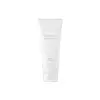What's inside
What's inside
 Key Ingredients
Key Ingredients

No key ingredients
 Benefits
Benefits

 Concerns
Concerns

 Ingredients Side-by-side
Ingredients Side-by-side

Water
Skin ConditioningSodium Cocoyl Isethionate
CleansingGlycerin
HumectantHydroxypropyl Starch Phosphate
Sodium Methyl Cocoyl Taurate
CleansingPropanediol
SolventPotassium Cocoyl Glycinate
Acrylates Copolymer
Cetearyl Alcohol
EmollientPotassium Cocoate
EmulsifyingSorbitan Olivate
EmulsifyingSalicylic Acid
MaskingGlycol Distearate
EmollientGlyceryl Stearate
EmollientCitric Acid
BufferingCaprylyl Glycol
EmollientButylene Glycol
Humectant1,2-Hexanediol
Skin ConditioningGlyceryl Caprylate
EmollientCentella Asiatica Extract
CleansingDisodium EDTA
Water, Sodium Cocoyl Isethionate, Glycerin, Hydroxypropyl Starch Phosphate, Sodium Methyl Cocoyl Taurate, Propanediol, Potassium Cocoyl Glycinate, Acrylates Copolymer, Cetearyl Alcohol, Potassium Cocoate, Sorbitan Olivate, Salicylic Acid, Glycol Distearate, Glyceryl Stearate, Citric Acid, Caprylyl Glycol, Butylene Glycol, 1,2-Hexanediol, Glyceryl Caprylate, Centella Asiatica Extract, Disodium EDTA
Water
Skin ConditioningGlycerin
HumectantPropanediol
SolventCocamidopropyl Betaine
CleansingSodium Lauroyl Methyl Isethionate
CleansingDecyl Glucoside
CleansingSalicylic Acid
MaskingXylitylglucoside
HumectantPEG-120 Methyl Glucose Dioleate
EmulsifyingPanthenol
Skin ConditioningBetaine
HumectantSodium PCA
HumectantPEG-150 Pentaerythrityl Tetrastearate
EmulsifyingPEG-6 Caprylic/Capric Glycerides
EmulsifyingAnhydroxylitol
HumectantXylitol
HumectantPentylene Glycol
Skin ConditioningAvena Sativa Kernel Extract
AbrasiveSodium Hydroxide
BufferingSodium Lactate
BufferingPhenoxyethanol
PreservativeEthylhexylglycerin
Skin ConditioningCoco-Glucoside
CleansingGlyceryl Oleate
EmollientZinc PCA
HumectantLactic Acid
BufferingCapryloyl Salicylic Acid
ExfoliatingAllantoin
Skin ConditioningTrisodium Ethylenediamine Disuccinate
Water, Glycerin, Propanediol, Cocamidopropyl Betaine, Sodium Lauroyl Methyl Isethionate, Decyl Glucoside, Salicylic Acid, Xylitylglucoside, PEG-120 Methyl Glucose Dioleate, Panthenol, Betaine, Sodium PCA, PEG-150 Pentaerythrityl Tetrastearate, PEG-6 Caprylic/Capric Glycerides, Anhydroxylitol, Xylitol, Pentylene Glycol, Avena Sativa Kernel Extract, Sodium Hydroxide, Sodium Lactate, Phenoxyethanol, Ethylhexylglycerin, Coco-Glucoside, Glyceryl Oleate, Zinc PCA, Lactic Acid, Capryloyl Salicylic Acid, Allantoin, Trisodium Ethylenediamine Disuccinate
 Reviews
Reviews

Ingredients Explained
These ingredients are found in both products.
Ingredients higher up in an ingredient list are typically present in a larger amount.
Glycerin is already naturally found in your skin. It helps moisturize and protect your skin.
A study from 2016 found glycerin to be more effective as a humectant than AHAs and hyaluronic acid.
As a humectant, it helps the skin stay hydrated by pulling moisture to your skin. The low molecular weight of glycerin allows it to pull moisture into the deeper layers of your skin.
Hydrated skin improves your skin barrier; Your skin barrier helps protect against irritants and bacteria.
Glycerin has also been found to have antimicrobial and antiviral properties. Due to these properties, glycerin is often used in wound and burn treatments.
In cosmetics, glycerin is usually derived from plants such as soybean or palm. However, it can also be sourced from animals, such as tallow or animal fat.
This ingredient is organic, colorless, odorless, and non-toxic.
Glycerin is the name for this ingredient in American English. British English uses Glycerol/Glycerine.
Learn more about GlycerinPropanediol is an all-star ingredient. It softens, hydrates, and smooths the skin.
It’s often used to:
Propanediol is not likely to cause sensitivity and considered safe to use. It is derived from corn or petroleum with a clear color and no scent.
Learn more about PropanediolSalicylic Acid (also known as beta hydroxy acid or BHA) is a well-known ingredient for treating skin that struggles with acne and clogged pores. It exfoliates both the skin's surface and deep within the pores to help clear out buildup, control oil, and reduce inflammation.
Unlike AHAs (alpha hydroxy acids), salicylic acid is oil-soluble. This allows it to penetrate into pores which makes it especially effective for treating blackheads and preventing future breakouts.
Salicylic acid is also known for its soothing properties. It has a similar structure to aspirin and can calm inflamed or irritated skin, making it a good option for acne-prone skin that is also sensitive.
Concentrations of 0.5-2% are recognized by the U.S. FDA as an over-the-counter topical acne product.
It can cause irritation and/or dryness if one's skin already has a compromised moisture barrier, so it's best to focus on repairing that before introducing this ingredient into your routine.
While salicylic acid does not increase sun sensitivity, it’s still important to wear sunscreen daily to protect your skin.
If you are looking for the ingredient called BHA or Butylated Hydroxyanisole, click here.
Learn more about Salicylic AcidWater. It's the most common cosmetic ingredient of all. You'll usually see it at the top of ingredient lists, meaning that it makes up the largest part of the product.
So why is it so popular? Water most often acts as a solvent - this means that it helps dissolve other ingredients into the formulation.
You'll also recognize water as that liquid we all need to stay alive. If you see this, drink a glass of water. Stay hydrated!
Learn more about Water